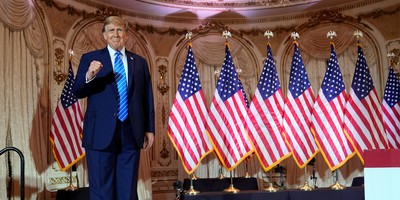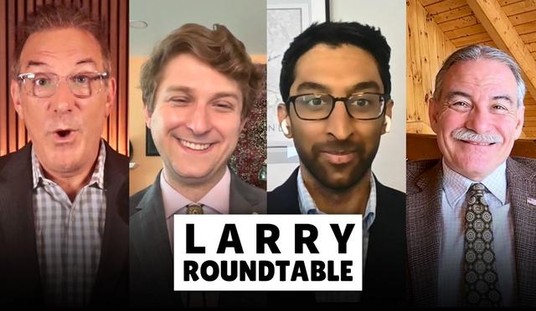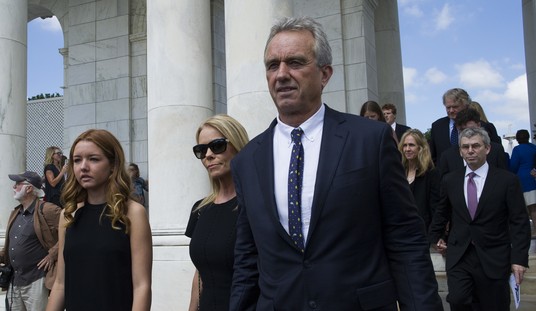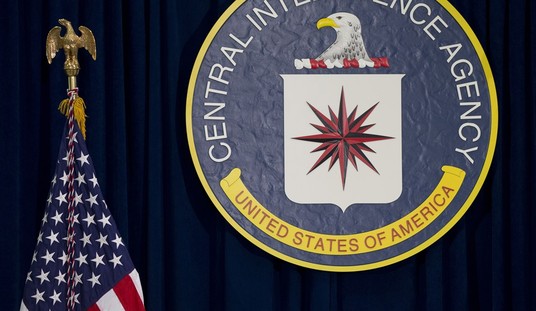Some statistics are so absurd it almost isn’t worth refuting them. Almost.
Consider this information from the Census Bureau, as reported in the Washington Post: “a record number of Americans -- nearly 1 in 2 -- have fallen into poverty or are scraping by on earnings that classify them as low income.” So: our government says half of Americans are poor?
We could refute the statistic with statistics.
We’re a country with more vehicles than people licensed to drive them. As poverty expert Robert Rector at The Heritage Foundation points out, other Census reports have found that 80 percent of poor households have air conditioning. Nearly two-thirds have cable or satellite TV. More than half of poor families with children have a video game system. Two-thirds have at least one DVD player. And 70 percent have a VCR while a quarter have a DVR system.
If this qualifies as “poor,” maybe we need a new definition of the word. But this may be cold-hearted. So for a moment, let’s assume the numbers are correct.
Here’s how the Associated Press put it: “the share of working families who are low income has risen for three straight years to 31.2 percent, or 10.2 million. That proportion is the highest in at least a decade, up from 27 percent in 2002, according to a new analysis by the Working Poor Families Project and the Population Reference Bureau, a nonprofit research group based in Washington.”
So, what else has increased along with poverty since that magic year, 2002? Well, government spending.
That year, Washington shelled out slightly more than $2 trillion -- the first time it had passed that benchmark. The numbers march upward year after year from there. $2.1 trillion in 2003. $2.4 trillion in ’05. Up to $2.9 trillion in 2008. And, with the onset of the Obama administration, the spending really kicks up: $3.5 trillion for ’09, $3.4 trillion in 2010 and an estimated $3.8 trillion in 2011.
Recommended
Much of that Obama-era spending was supposed to help improve the American economy, of course. That’s why the 2009 spending program was called a “stimulus bill.” But the spending clearly isn’t helping, since the government’s own poverty figures keep getting worse.
A lot of that “stimulus” money was misallocated, if the goal was really to improve the economy. For example, the bill contained some $2 billion for Head Start as part of the $48 billion it spent on education.
Now, we can argue about whether Head Start pays off in the long-run. “[A] large-scale study seems to confirm what critics have suspected for years, that the program’s benefits are minimal and don’t last,” NPR reported in 2005.
But even if Head Start helps, it would be decades before the economy gets any boost from that $2 trillion. Meanwhile, the “stimulus” bill also contained $1 billion for “census programs,” so it may well have paid for the stimulating poverty numbers that stimulated the writing of this column.
Correlation isn’t causation, of course. But keep this in mind the next time someone bemoans that the government ought to “do something” to help boost the economy. The fact is that the federal government is doing (or at least spending) almost twice as much as it spent ten years ago, and yet its own stats (whether we believe them, the government probably assumes they’re accurate) say things are getting worse.
It’s time to reduce the size and scope of government by slashing spending. Things were apparently pretty good in 2002, so why not use that as a benchmark and aim for $2 trillion per year in total federal spending?
This level of spending would force our government to do less. Washington would have to live within its means, and start paying back some of the $15 trillion in debt it’s piled up. A smaller government could also unleash the private sector, the real job creator in this country. There would be more money available for the private sector to borrow, and as it expands it could create jobs and lift Americans out of poverty.
Excessive federal spending isn’t preventing poverty. If anything, it seems to be exacerbating it. Let’s change course, before things get worse.

























Join the conversation as a VIP Member